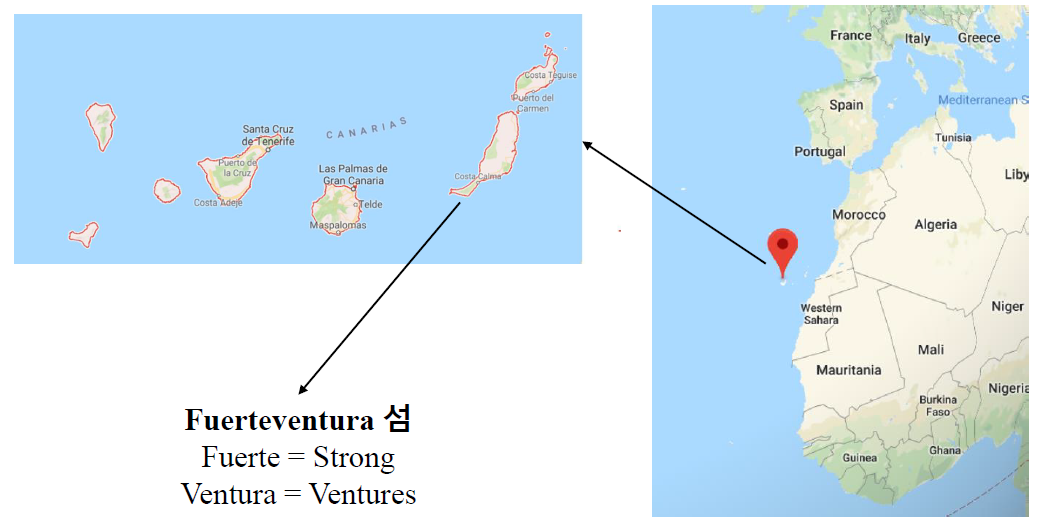이건 내가 온/오프라인에서 굉장히 자주 받는 질문이고 나도 다른 투자자들에게 자주 물어보는 질문이다. 내 투자 framework은? (쉬운설명: 내가 투자결정을 할때 고려하는 것들은?)
솔직히 매우 어려운 질문이다. 모든 투자자들이 나름대로 어느정도의 framework와 공식을 가지고 투자 기회를 검토하고 평가하겠지만 이런 원칙과 생각에 영향을 미칠 수 있는 변수들이 워낙 많이 존재하기 때문에 “상황에 따라 다릅니다”가 정답일 거 같다. 하지만, 그래도 대부분 기본적인 틀을 기반으로 결정을 할텐데 나 같은 경우는 다음과 같다 – 솔직히, 대부분의 투자자들은 별반 다르지 않을 것이라고 생각한다.
1. Team : 항상 강조하지만 아무리 강조해도 충분치 않다. 역시 팀원들이 가장 중요하다. 나는 일단 첫인상을 매우 중요하게 생각한다. 창업팀의 눈빛, 말투, 상황에 대응하는 자세 등 여러가지를 짧은 첫 만남을 통해서 관찰하려고 노력한다. 첫 만남의 느낌이 좋으면 75% 합격이다. 물론, 사람을 한 번 만나서 판단하긴 어렵다. 틀린적도 많다(더 많다). 첫 느낌은 너무 좋았지만 알아 갈수록 실망했던 경우도 있었고 반대로 첫 만남은 좋지 않았지만 몇 번 더 만난 후 투자를 한 경우도 있다. 하지만, 투자자라는 직업상 사람을 굉장히 많이 만나보니 이제 한 시간 정도 만나서 이야기를 해보면 이 사람이 좋다 또는 별루다 라는 판단은 할 수 있게 된 거 같다. 물론, 이 판단이 맞다는 말이 아니다. 그냥 나 스스로 확신을 가질 수 있다는 의미다. 이런 의미에서 내가 잘 알고 좋아하는 지인의 소개를 통해서 만나는 팀들은 훨씬 확률이 높다고 말할 수 있다.
내가 생각하는 이상적인 창업팀은 3명이다. 엔지니어 2명 + 디자이너 1명 / 엔지니어 3명 / 엔지니어 1명 + 디자이너 1명 + 제품 1명 : 이게 내가 제일 좋아하는 콤보다. 팀에 엔지니어가 한 명도 없는 팀은 거의 투자를 하지 않지만 너무나 좋은 팀원들이면 예외라는 건 항상 있을 수 있다. 창업팀을 만난 후 항상 스스로에게 물어본다 “상황이 좋을때는 상관없지만 비즈니스가 잘 안되고 회사에 돈이 없을때도 이 팀은 계속 같이 똘똘 뭉쳐서 비전을 실행할 수 있는 사람들인가?” 물론, 팀원들을 개인적으로 잘 모르는 상황에서 정확한 답이 나오기는 힘들지만 최대한 이 질문에 대한 답에 스스로 확신을 가질 수 있도록 다양한 각도에서 검토를 해본다.
그리고 나는 “잘 모르겠습니다”라는 말을 솔직하게 하는 팀들을 좋아한다. 어떤 팀을 만나면 모든 질문에 대한 답을 가지고 있으며, 조금이라도 자존심을 건드리는 공격적인 질문을 하면 (나는 성격도 성격이지만 일부러 이럴때가 많다) 굉장히 방어적인 반응을 보인다. 이런 팀들은 벤처를 하면서 성공할 확률이 매우 떨어진다. 잘 아는 건 당연히 자신있게 어필하되, 모르는 건 솔직하게 모른다고 하는 팀들을 좋아한다.
2. 시장의 크기 (문제점) : 이들이 해결하고자 하는 문제는 무엇인가? 그리고 이 문제를 돈으로 환산해보면 시장의 크기가 어느 정도 될까? 기발한 기술과 제품이라도 시장의 크기가 너무 작으면 투자로써의 매력은 없다. 가령 시장의 100%를 다 먹었을때 가능한 매출이 100억 밖에 되지 않으면 투자하는게 매우 꺼려진다. 100억 이라는 시장 자체가 투자금의 큰 return을 보고 투자하는 VC들에게는 너무 작게 느껴질 수 있으며, 시장의 100%를 다 먹을 수 있는 비즈니스는 없기 때문이다. 전체 시장의 10%만 점유해도 나쁘지 않은 비즈니스인데 위의 경우에는 그러면 10억짜리 비즈니스에 투자를 하게 되는건데 좀 곤란하다. 아마도 한국 시장만을 대상으로 비즈니스를 생각하는 한국의 벤처기업이면 이 시장의 크기에 대해서 잘 고민해봐야 할 것이다. 물론, 쿠팡과 같이 한국에서만 비즈니스를 해도 시장의 크기가 수조원이면 이야기는 달라진다.
여기서 나는 한가지를 더 본다. 스타트업의 비즈니스가 제공하는 서비스가 현재 시장에 존재하는 특정 문제를 해결하기 위한 서비스인가 아니면 그냥 ‘있으면 더 좋은’ 기능적 서비스인가? 만약에 전자라면 (기존 프로세스나 제품에 사용자의 편의를 해치는 문제점이 있고, 이를 해결하기 위한 비즈니스) 시장의 크기가 상대적으로 작아도 검토를 꼼꼼히 하는 편이다. 왜냐하면 뭔가 불편한 걸 해결하는 제품이라면 그렇지 않은 제품보다는 잠재 고객이 돈을 내고 구매할 확률이 훨씬 크기 때문이다. 하지만, 이미 시장에 좋은 제품들이 나와있고 특별히 문제가 되는 건 없지만 “우리 제품을 사용하면 더 재미있고 많은 걸 할 수 있어요” 류의 ‘있으면 좋은(good to have)’ 제품의 경우 시장이 아주 클 수록 좋다.
3. 기술 : 좋은 팀이, 큰 시장을 공략한다. 아주 좋은 그림이다. 그럼 이들이 어떻게 그 시장을 공략할 계획인가? 이들이 만드는 제품이나 서비스가 노동집약적인 접근방식인가 아니면 첨단 기술을 이용한 접근방식인가? 우린 당연히 후자만을 본다. 아무리 큰 시장이라도 시장을 접근하는 방법에 기술이 활용되지 않으면 우리같은 tech VC들은 투자를 정당화 할 수도 없으며 하기도 싫다. 기술을 이용해서 한계비용(marginal cost)을 거의 0으로 만들 수 있는 비즈니스를 우리는 좋아한다.
예를 들어 경영 컨설팅 비즈니스의 시장 크기가 10조원이라고 가정해 보자. 큰 시장이고 똑똑한 젊은 친구들이 새로운 방법으로 시장을 접근해서 5년만에 시장의 10%를 먹겠다고 찾아왔다. 아마도 투자 하지 않을 것이다. 왜냐하면 컨설팅이라는 업 자체가 매우 노동집약적이기 때문이다. 즉, 사람 장사이다. 만약 1개의 기업을 컨설팅 하는데 컨설턴트 3명이 필요하면, 2개의 기업을 컨설팅 하려면 컨설턴트 6명이 필요하다. 5개의 기업을 컨설팅 하려면 5×3명 = 15명의 컨설턴트가 필요하다(플러스 마이너스 2~3명). 당연히 매출은 비례적으로 증가하지만, 비용도 똑같이 증가한다. 매우 선형적인 성장을 하는 비즈니스이다.
이와 달리, 기업이 스스로를 진단해서 외부 컨설턴트의 컨설팅을 받는 수준의 결과를 얻을 수 있는 온라인 소프트웨어를 제공하는 비즈니스라면 충분히 고려해 볼 수 있을 것이다(물론, 이런 소프트웨어는 이 세상에 존재하지 않는다). 1개의 기업에 이 서비스를 제공하는거랑 10,000개의 기업에 이 서비스를 제공할때 드는 비용은 동일하다. 한계비용이 거의 ‘0’이기 때문이다. 비용은 최소화 하면서 매출은 극대화 할 수 있는 비즈니스이다. 당연히 이익 또한 극대화 할 수 있다.
바로 대부분의 모바일과 웹 서비스의 기본이며, 기술 play가 있기 때문에만 가능한 것이다.
나는 투자할 때 주로 위 3가지를 많이 생각한다. 물론, 세상 모든 일이 그렇듯이 예외는 항상 존재한다. 아무리 시장이 작아도 팀이 너무너무 맘에 든다면 투자를 할 수도 있다(그리고 다른 걸 하라고 권장할 것이다). 기술의 play가 조금 약해도 팀이 너무너무 맘에 들면 투자를 할 수도 있다. 하지만, 기술이 아무리 뛰어나고 시장이 100조원이라도 팀이 맘에 안 들면 절대로 투자는 안 한다.
투자 framework 동영상 보기

